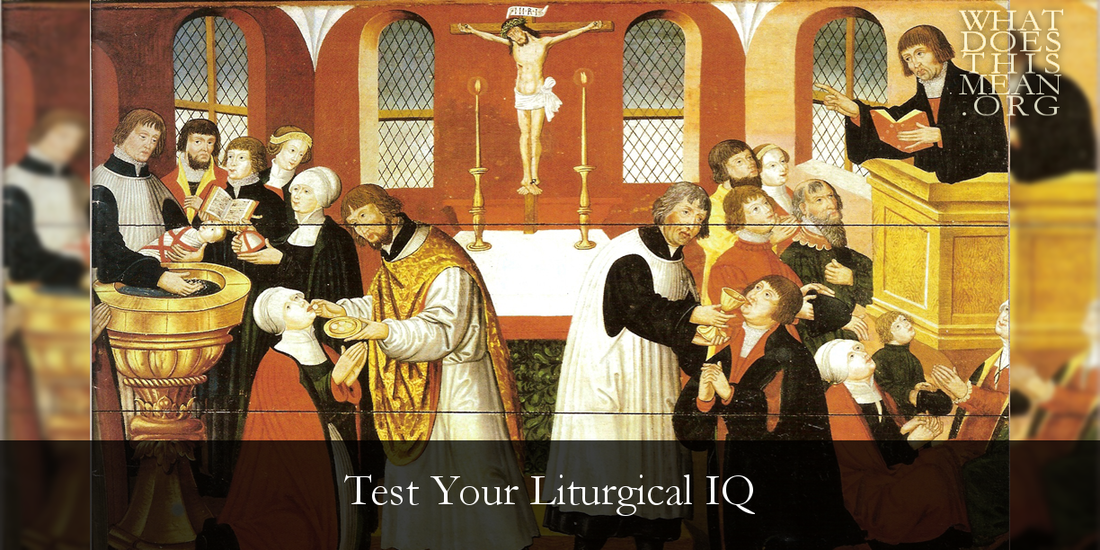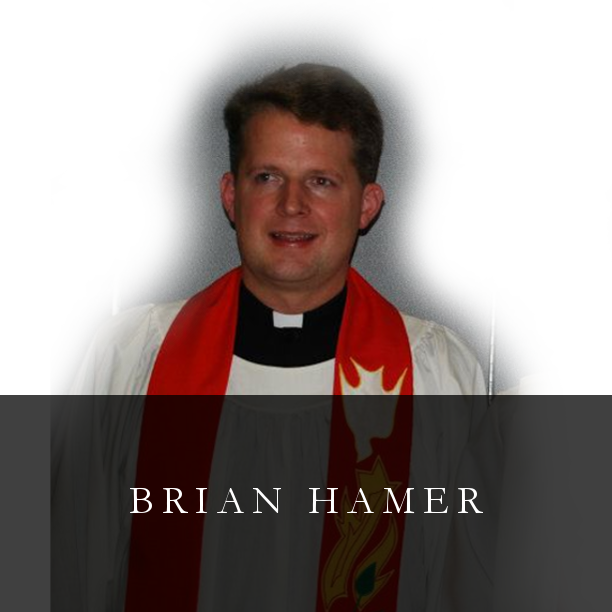Grant that what we sing with our lips we may believe in our hearts,
And what we believe in our hearts we may show forth in our lives.
Through Jesus Christ, our Lord. Amen.
- All images are to be removed from the church and sent to the court.
- The stone altar is to be ripped from the ground and replaced with a wooden table covered with a black cloth.
- When the Lord’s Supper is held, a white cloth covers the table.
- All altars, panels, crucifixes and paintings are to be completely abolished, as they are idolatrous and stem from the papacy.
- Instead of the host, bread is to be used and baked into bread loaves, cut into strips and placed in a dish, from which the people receive it in their hands; likewise with the chalice.
- The words of the supper are no longer to be sung, but rather spoken.
- The golden goblets are to be replaced with wooden ones.
- The prayer in place of the collect is to be spoken, not sung.
- Mass vestments and other finery are no longer to be used.
- No lamps or candles are to be placed at the altar.
- The houseling cloth is not to be held in front of the communicants.
- The people are not to bow as if Christ is present.
- The communicants shall no longer kneel.
- The sign of the cross after the benediction is to be discontinued.
- The priest is no longer to stand with his back to the people.
- The collect and Epistle are no longer to be sung, but rather spoken.
- Individuals are no longer to go to confession before communing, but rather register with the priest in writing.
- The people are no longer to bow when the name of Jesus is mentioned, nor are they to remove their hats.
- The Our Father is no longer to be prayed aloud before the sermon, but rather there is to be silent prayer.
- Communion is not to be taken to the sick, as it is dangerous, especially in times of pestilence.
- The stone baptismal font is to be removed and a basin substituted.
- Epitaphs and crucifixes are no longer to be tolerated in the church.
- The Holy Trinity is not to be depicted in any visual form.
- The words of the sacrament are to be altered and considered symbolic.
- The historic Epistles and Gospels are no longer to be used, but rather a section of the Bible [selected by the minister] read without commentary.
One can immediately see that the Margrave was trying to abolish all singing in the liturgy (see statements #6, 8, and 16), although he probably retained the singing of Psalms, which was common among the heirs of Calvin. This leads one to ask, Why do we sing the liturgy?
Before answering this question, listen to an English edition of one of the objects of the Margrave’s criticism, the chanting of the Gospel lesson. Consider the chanting of the Gospel, the heart of the Service of the Word, in the following audio of St. Matthew 6:24-34, sung directly from Luther’s Works (American Edition), Vol. 53, pp. 86-89:
- Singing binds together a corporate community.
- Music aids the memory.
- Joy inevitably breaks into song.
- The same can be said for sorrow.
- Music interprets a text. (pp. 27-29)
All of these are indeed salutary reasons to sing. Using Westermeyer’s list as a reference, consider how Lutherans are bound together when they sing Luther’s hymns at a Reformation festival. Think about the sacred texts that you have learned in the liturgy because the music carried the tune into your ears and into your hearts, as the ancient Chorister’s Prayer asks that “what we sing with our lips we may believe in our hearts.” Consider the joy and sorrow inherent in singing, from the greatest joy to the lowest sorrow. And music interprets a text, as nearly every issue of “Lifted Voice” seeks to demonstrate in the relationship between text and tune in our treasury of sacred music.
Again, these are five very good reasons for singing. But there is one more reason to sing the liturgy that is missing from Westermeyer’s list: Christ, the Bridegroom, is present in our worship life, and one always sings when Christ is present! Jesus told the disciples not to fast while the Bridegroom is with them. Whenever the Bridegroom is present, it is a time for rejoicing, for the day of the Messianic banquet has arrived. Feasting, not fasting, indicates the present of the new era of salvation. And singing, not just speaking, is the appropriate response of the Bride to the arrival of her heavenly Bridegroom.
This incarnational and sacramental understanding of Christ is precisely the issue with statement #12 in the declaration: “The people are not to bow as if Christ were present.” This is not just bad liturgy. This is rank false doctrine, leading the Bride astray into false belief, despair, and other great shame and vice. One is tempted to rewrite the entire declaration in the language of the Lutheran Confessions, focusing on the presence of Christ and the appropriate response of the Bride to His abiding presence. Again, Christ is incarnate among us, according to His Divine and human natures, to talk with His Bride in the preached word and to eat with her in the Lord’s Supper.
Now test your liturgical IQ. Reread the declaration and count how many statements you disagree with. Use the following scale to rate your understanding of the real presence, based on the number of statements you disagree with:
| King: 21-25 Archconfessional theologian, typical Fort Wayne guy (TFWG), faithful layman, and/or proponent of classical Christian orthodoxy, coupled with a high view of the sacraments, and probably a lifetime subscription to Gottesdienst: The Journal of Lutheran Liturgy Queen: 16-20 As long as you disagree with statement #12 and believe that Christ is present in your worship life, you are probably equipped to worship the Lord in spirit and in truth and might enjoy podcasts from The White Horse Inn, which features faithful theologians of Reformed theology. Bishop: 11-15 Some potential for classical orthodoxy, but be sure to read the book, Heaven on Earth by Arthur A. Just, Jr., and see if it might improve your understanding of the real presence and therefore your score on your next attempt. Knight: 6-10 Probably attending “a church with a liturgy,” i.e., a church where the liturgy is present, but it is not done particularly well or with a strong emphasis on the real presence of Christ. Rook: 1-5 Cryptic proponent of the reforms of Vatican II, praise team member, and/or leftover hippy from the 1960’s Pawn: 0 Praise team leader, proponent of the “Left Behind” series, or a church bureaucrat who wants to “grow the church" through methods instead of means |
In contrast to this lack of discretion, consider how the people of Jägendorf, just one year from the 100th anniversary of the Reformation (1617), responded to the decree of Johann Georg. Far from adopting the reforms in the name of being supposedly “mission-minded,” they resisted the changes. In response, a garrison of 150 soldiers was sent on a three-month detachment to enforce the decree. But the stalwart sons of the Reformation prevailed, and Lutheran practices were soon reintroduced, before the territory was later catholicized.
As the Anhalt Controversy was heating up, the life of the Lutheran hymn writer, Nicolaus Selnecker (1532-1592), was winding down. His prayer is our prayer in these turbulent days:
For round us falls the eventide.
O let Your Word, that saving light,
Shine forth undimmed into the night.
In these last days of great distress
Grant us, dear Lord, true steadfastness
That we keep pure till life is spent
Your holy Word and Sacrament.



 RSS Feed
RSS Feed
